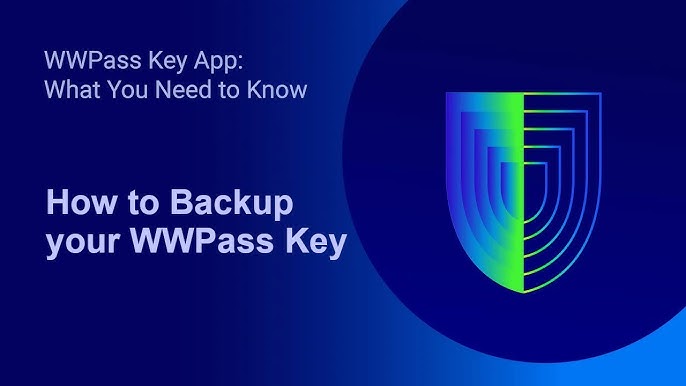
Adopting a reliable password manager https://www.wwpass.com/passhub-enterprise-password-manager is one of the most effective steps organizations and individuals can take to reduce account compromise and password-related friction. A password manager simplifies secure password storage, generates strong unique credentials, and integrates with workflows to keep authentication efficient while minimizing human error.
What is a password manager? At its core, a password manager is a secure digital vault that stores user credentials—usernames, passwords, and often other sensitive data like secure notes or payment card details—behind a single master key. Modern implementations offer browser integration, mobile apps, desktop clients, and enterprise-level administration to support teams and compliance requirements. The manager typically encrypts data locally with strong cryptography before syncing to cloud storage, so only authorized users can decrypt entries.
How password managers work: Most password managers rely on end-to-end encryption and a master password (or master key) that should be known only to the user. When a user creates or saves credentials, the client application encrypts the entry locally using an encryption algorithm such as AES-256 and a key derived from the master password. The encrypted blob is then stored or synced to the provider’s servers. When the user authenticates, the client decrypts the data locally and autofills forms or displays credentials. Some systems support multi-factor authentication (MFA) to protect access to the vault, and advanced solutions use hardware-backed keys or biometric unlocks for additional security.
Benefits for individuals: For everyday users, the biggest advantages of a password manager are the ability to maintain long, unique passwords for every service without memorizing them, streamlined login via autofill, and secure password sharing for family members when needed. By eliminating password reuse, users significantly reduce the risk that a breach on one site will compromise accounts elsewhere. Built-in password generators make it trivial to create strong passphrases or random strings meeting site complexity rules.
Enterprise features and considerations: Organizations need more than just encrypted storage. Enterprise-grade password managers include centralized administration, audit logs, role-based access control, secure password sharing policies, and integrations with single sign-on (SSO) and directory services like Active Directory or LDAP. Provisioning and deprovisioning workflows are critical: when an employee leaves, admins must be able to revoke access to shared credentials. Enterprise solutions should also provide reporting to support compliance frameworks and help detect risky behaviors such as weak or reused passwords.
Security best practices: Choosing and using a password manager safely requires attention to a few core practices. First, pick a strong master password or use a hardware security key to unlock the vault. Enable MFA wherever possible. Regularly back up encrypted vault data and verify recovery options so legitimate access can be restored if needed. Avoid storing one-time codes or highly sensitive secrets in an insecure manner; use dedicated secure note features instead. Keep client software and browser extensions up to date to reduce the attack surface exposed by vulnerabilities. Finally, educate users about phishing and social engineering, since a vault unlocked on a compromised device can be abused.

Threat models and limitations: While password managers substantially raise the bar for attackers, they are not a silver bullet. If an attacker gains access to an unlocked device, they can often use the password manager. If an attacker obtains the master password and bypasses MFA, complete compromise is possible. Therefore, device security, OS updates, endpoint protection, and physical safeguards remain essential. Additionally, some password managers have in the past been targeted for zero-day exploits or credential harvesting via malicious browser extensions—choosing a reputable vendor and following recommended configurations helps mitigate such risks.
Choosing the right solution: When evaluating a password manager, consider security architecture (end-to-end encryption, zero-knowledge model), platform support, ease of use, and enterprise administration capabilities if you manage a team. Look for independent security audits, transparent vulnerability disclosure policies, and responsive support. Consider how the solution handles password sharing, how it integrates with existing identity systems, and whether it supports policies such as forced password rotation or complexity enforcement. Cost, scalability, and migration tools also matter when moving from spreadsheets or legacy tools.
Onboarding and cultural adoption: The technical merits of a password manager matter less if users resist adoption. Effective rollouts combine policy, training, and gradual enforcement. Start with pilot teams, provide clear guides and hands-on help, and demonstrate time-saving features like autofill and password capture. Use organizational policies to require MFA and unique passwords for critical systems while avoiding heavy-handed controls that drive users to insecure workarounds. Celebrate small wins—reduced helpdesk calls about password resets are a strong early indicator of success.
Beyond passwords: Many modern platforms are expanding into broader secrets and access management. Credential vaults may store API keys, SSH keys, certificates, and other machine-to-machine secrets. Privileged access management (PAM) adds session recording and just-in-time access for highly sensitive accounts. Integrating a password manager into a wider identity and access strategy—together with SSO, conditional access, and least-privilege principles—provides stronger defenses against lateral movement and credential theft.
Regulatory and compliance aspects: For regulated industries, password management is often a component of audit and compliance programs. Properly implemented password managers help demonstrate controls around credential storage and access. Look for features that meet your regulatory needs: retention logs, exportable audit trails, encryption standards, and the ability to enforce granular policies. Work with compliance teams early to align password management practices with legal obligations such as GDPR, PCI DSS, HIPAA, or industry-specific standards.
Key takeaways: A well-chosen password manager reduces risk, simplifies workflows, and enables organizations and individuals to adopt strong unique credentials at scale. Combine password managers with multi-factor authentication, device hygiene, and user education to achieve the best security posture. For enterprises, prioritize solutions with robust administrative controls, auditing, and integrations that match your identity architecture. With the right tools and practices, password management becomes a cornerstone of modern cybersecurity rather than an administrative burden.
In summary, password managers are essential tools for defending against credential-based threats. They make it feasible to maintain strong, unique passwords for every account, improve productivity through autofill and seamless synchronization, and support enterprise needs with governance and auditability. Implement them thoughtfully, train users, and integrate them with your broader identity strategy to maximize security and minimize friction.




 English
English